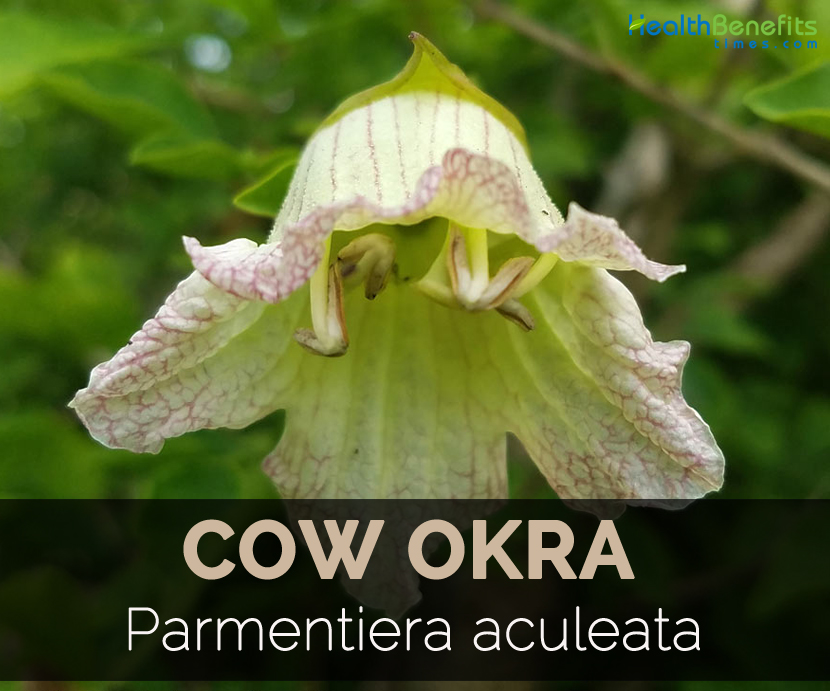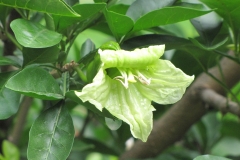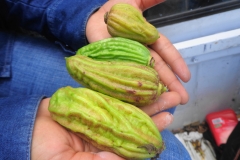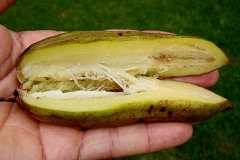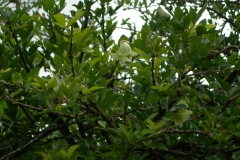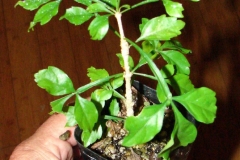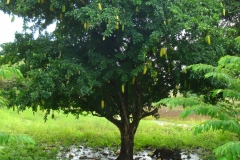| Cow Okra Quick Facts |
| Name: |
Cow Okra |
| Scientific Name: |
Parmentiera aculeata |
| Origin |
Central America – Mexico, Belize, Costa Rica, El Salvador; Guatemala and Honduras. It has naturalized in Northern Australia. |
| Colors |
Subcylindric, candle-shaped, 10–12 cm long, 7 cm wide |
| Shapes |
Subcylindric, candle-shaped, 10–12 cm long, 7 cm wide |
| Taste |
Sweet |
Cow Okra is a small or medium sized and evergreen tree which measures 10 meters high having short thick trunk and pale bark, subterete branches and spreading crown. Leaves are opposite or subopposite having 3-5 leaflets. Petiole is long and narrowly winged. Leaflets are elliptic to obovate, entire and 4-6 cm long. Flowers are campanulate, greenish to greenish-white having brown purple lines, solitary and fasciculate. Calyx is spathaceous and 2.5 to 3.5 cm long. Corolla is trumpet shaped and somewhat curved. Ovary is glandular-lepidote and two celled. Fruits are short, subcylindric and candle shaped measuring 10–12 cm long and 7 cm wide. Stamens are exserted with glabrous anthers.
Leaves
Leaves are variable, trifoliate and opposite but pair of simple leaves in axils of trifoliate leaves. Leaf blades are 2-6 x 0.8-2.5 cm. Petioles are narrowly winged.
Flowers
Flowers are large and about 4.5-6 cm long. Calyx is dark green and splits on one side. Corolla is pale green having purple or maroon stripes on lobes.
Fruit
Fruits are 8-18 x 4-4.5 cm and somewhat fibrous. Seeds are patelliform about 3 mm in diameter.
Stems and Leaves
Stems are pale brown and covered with relatively smooth bark. Younger branches are hairless, green and rounded. Leaves are oppositely arranged and are compound having three leaflets and form on grooved stalks about 13-35 mm long. Leaflets are oval shaped and entire margins and have rounded or pointed tips.
Medicinal uses
- Aztecs use it for treating dropsy, renal disorders, colds, gastric, indigestion and ear infections.
- Consume the tea made from leaves for ear infections. Soak the cotton ball in the mixture and insert in the ear.
Culinary uses
Consume it fresh, cooked or roasted or make preserves and pickles.
References:
https://www.itis.gov/servlet/SingleRpt/SingleRpt?search_topic=TSN&search_value=506044#null
https://toptropicals.com/catalog/uid/Parmentiera_edulis.htm
http://tropical.theferns.info/viewtropical.php?id=Parmentiera+aculeata
Comments
comments


